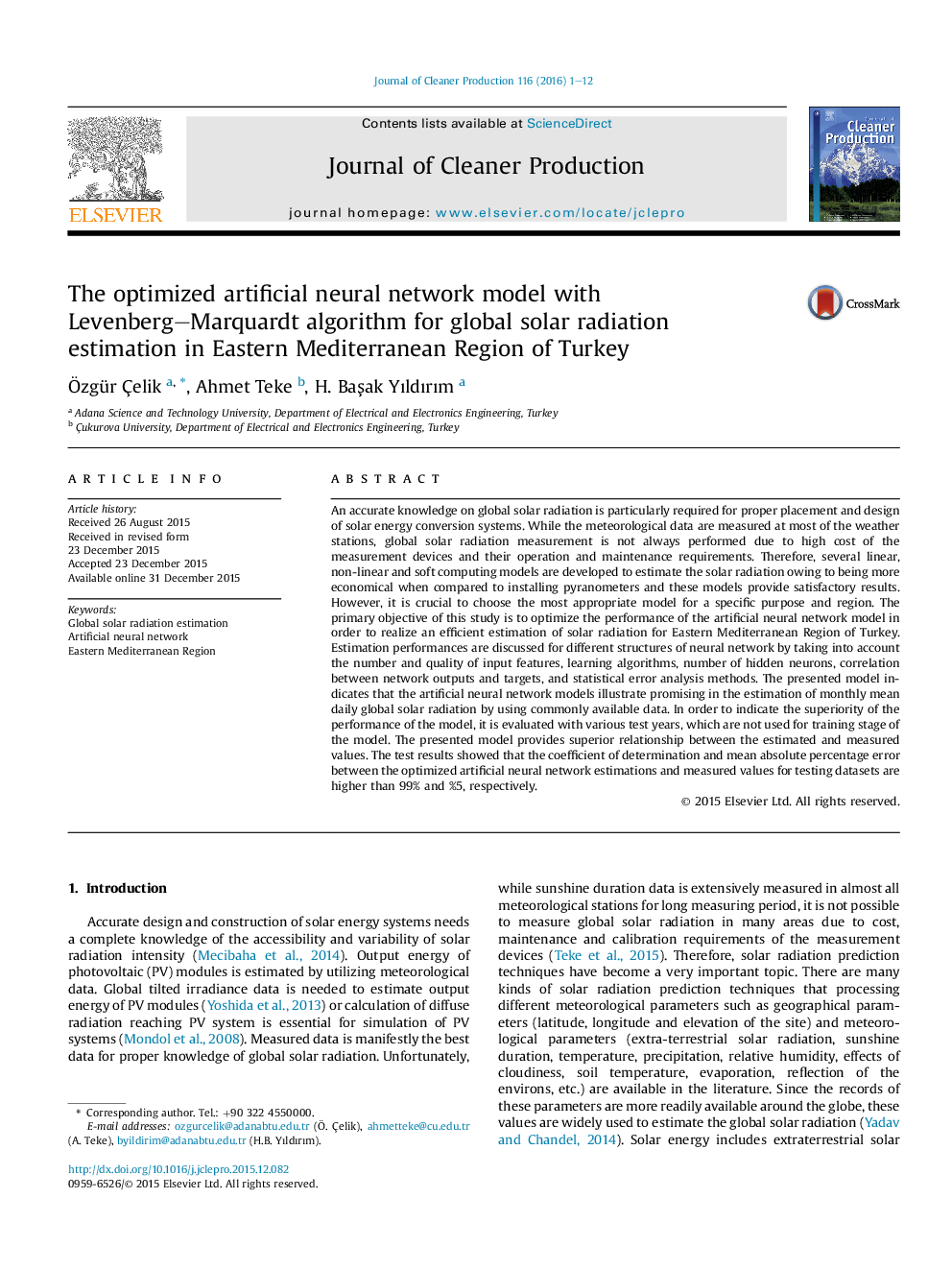| Article ID | Journal | Published Year | Pages | File Type |
|---|---|---|---|---|
| 1744178 | Journal of Cleaner Production | 2016 | 12 Pages |
•An ANN model to estimate the global solar radiation for Eastern Mediterranean Region of Turkey is proposed.•The estimation results of models are compared to measured data for four locations.•The proposed model estimates monthly mean daily solar radiation with superior accuracy.
An accurate knowledge on global solar radiation is particularly required for proper placement and design of solar energy conversion systems. While the meteorological data are measured at most of the weather stations, global solar radiation measurement is not always performed due to high cost of the measurement devices and their operation and maintenance requirements. Therefore, several linear, non-linear and soft computing models are developed to estimate the solar radiation owing to being more economical when compared to installing pyranometers and these models provide satisfactory results. However, it is crucial to choose the most appropriate model for a specific purpose and region. The primary objective of this study is to optimize the performance of the artificial neural network model in order to realize an efficient estimation of solar radiation for Eastern Mediterranean Region of Turkey. Estimation performances are discussed for different structures of neural network by taking into account the number and quality of input features, learning algorithms, number of hidden neurons, correlation between network outputs and targets, and statistical error analysis methods. The presented model indicates that the artificial neural network models illustrate promising in the estimation of monthly mean daily global solar radiation by using commonly available data. In order to indicate the superiority of the performance of the model, it is evaluated with various test years, which are not used for training stage of the model. The presented model provides superior relationship between the estimated and measured values. The test results showed that the coefficient of determination and mean absolute percentage error between the optimized artificial neural network estimations and measured values for testing datasets are higher than 99% and %5, respectively.
